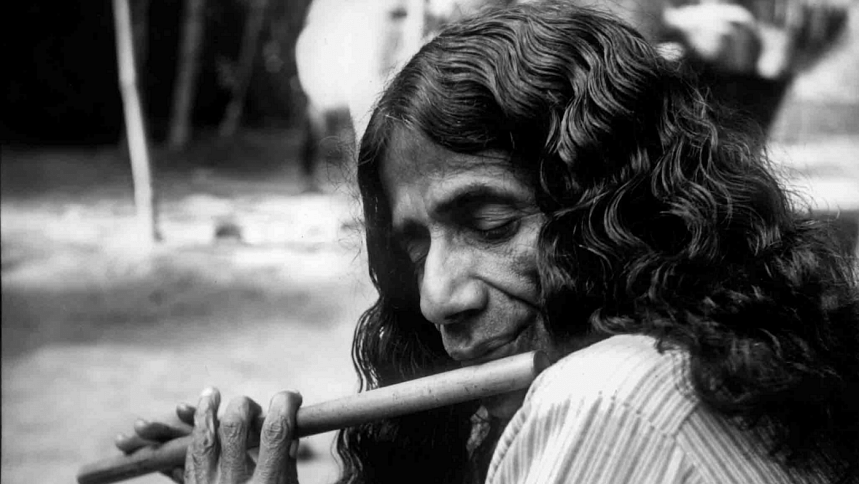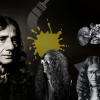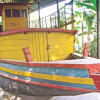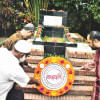100 Years of SM Sultan

Sheikh Mohammed Sultan (better known as SM Sultan), is widely regarded as one of the greatest artists of the Indian subcontinent. His impressionist works, the vigor, and movement of brush, the gracefulness of the figures, their worldliness and sensual beauty are completely free from any sort of mystifying symbol apart from the inherent logic of aesthetics. They bear ample testimony of Renaissance paintings, as said by Ahmed Sofa. An avant-garde artist, Sultan chose peasants as his muse. His works depicted their stoic valor, power of survival, and unceasing commitment to the land. On his 100th birth anniversary today, The Daily Star pays tribute to the life of this extraordinary yet undervalued art maestro.

In the early 1950s, a bohemian wanderer, a mystic painter arrived at Narail with no earthly possessions. Losing all that he had of his ancestral land, this vagabond and bachelor started to live in a bucolic environment with an adopted family and pets.
He was usually adorned in a long black kurta, and a scarf. The people in his vicinity got accustomed to listening to this long-haired, tall, handsome figure's hypnotising flute on the shores of the mighty Chitra River at night. This painter –who constantly creates magic with his brushes, homemade matte earthen colors, and large jute canvases and lets it all rot and ruin after finishing the paintings, unbothered, unconcerned– is a singer and dancer too.

These people had no idea that the man–whom they affectionately called Laal Miah–deliberately preferring the company of cats and teaching rural children, had his work featured in the finest art institutions of the USA and Britain alongside maestros like Pablo Picasso, Salvador Dali, Matisse and Vincent Van Gogh—some of the greatest in the world of arts.

However, this was the narrative and lifestyle Sultan always preferred. Son of a mason, and farmer by heart, he preferred and chose the simplicity of his people and the soil, creating melodies of struggle, strength, and resilience with his bold brush strokes.
Even after being acclaimed and acknowledged all over the world, including India, Pakistan, the USA, Britain, and Europe, Sultan's artworks before the 1950s remain a mystery as most of these could not be traced due to his nomadic nature.

This artist threw his celebrity status, acclamation, and even his paintings behind and came to the then Bengal, only to find himself disqualified to be a teacher at Zainul Abedin's Government Institute of Arts in 1948 because he had no academic certificates, only to find himself to be perceived as "a painter who cannot even hold a brush" by some critiques, according to Ahmed Sofa's discourses.
His very simple but highly philosophic art, which is revealed in nature and the people of Bangladesh, has become the prime source of inspiration for the new generation of painters. Mario Palma, an eminent art critic (author of L'arte che non dorme), wrote about Sultan in his "Tales of an Art Lover", "In my humble opinion, Sultan is the greatest interpreter of the soil and spirit of Bangladesh… The figures of the Sultan are truly fascinating and unique in the contemporary art scene."
Sultan's characters were farmers, rural women, children, animals, and even pets. His depiction of deprived, oppressed, and struggling humanity boldly looking toward the future with hope, vigour, and confidence with such ungodly structures and mutations tells the tale of strength, resilience, and empowerment.
Professor Burhanuddin Khan Jahangir, in his seminal work on Sultan, says, "Then who really is Sultan? A hidden Picasso? An undiscovered Vincent Van Gogh? In him, Sultan combines both. Maybe even more…"

In an interview with Weekly Prahar on May 6, 1987, Sultan neither confirmed nor denied his stylistic comparability to Picasso in his quiet but articulate manner.
He said, "There are some differences between Picasso and me. Picasso shifted from figurative art to non-figurative art, and I shifted from non-figurative art to figurative art. Picasso painted a picture of the violence inflicted on Guernica. I painted a picture of sacrifice."

Sultan took little care of his finished works, and many are lost. He was unconcerned about using materials that would preserve. Sultan's song was never about a legacy of artwork but of ideas.
Apart from being awarded prestigious awards, accolades, and being featured in top art institutions, Sultan received wide press coverage and laudatory critical reviews in renowned newspapers like the New York Times, Washington Post, The Telegraph, The Times, The Guardian, Le Monde, and many more. He became internationally acclaimed as a great painter of classic dimensions. Sultan received the Ekushey Padak, Swadhinata Padak, Bangladesh Charu Shilpi Sangsad Padak, and other prestigious awards.

The master painter died in 1994, leaving behind a myriad of known works, including "First Plantation" (1975), "Char Dakhal" (1976), "Harvesting" (1986), and "Fishing-3" (1991), and assumably hundreds of other masterpieces which have been lost to time.

 For all latest news, follow The Daily Star's Google News channel.
For all latest news, follow The Daily Star's Google News channel. 








Comments